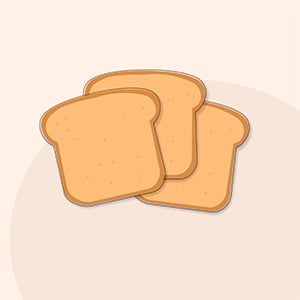

Traditionally, bread has only four ingredients: flour, yeast, water and salt – but things have changed over the past few decades.
The good news
Bread manufacturers have stopped using the chemical additive, azodicarbonamide (ADA) in the bread-baking process.
ADA was used in bread in tiny amounts (45 parts per million) as a “flour improver” to make the product whiter and improve the texture. ADA is regarded as safe by the US Food and Drug Administration (FDA), but has been banned in the UK, Australia and most of Europe.
What’s the problem with ADA? It’s been linked to allergies, asthma and respiratory problems.
The bad stuff
Bread still has an unhealthy reputation. The Heart and Stroke Foundation of South Africa (HSF), says that the single highest contributor to the total salt intake of South Africans comes from bread. “Our bread contains high levels of sodium. In fact, much more than many first-world countries.”
This is of particular concern as the black population is considered salt sensitive, and therefore more at risk of heart disease and stroke.
According to research a high salt intake contributes to high blood pressure, which is one of the most powerful predictors of stroke and major cardiovascular events, including heart attack and heart failure. Other harmful effects of too much salt are that it increases the risk of kidney disease, kidney stones, osteoporosis and possibly stomach cancer.
So, apart from ADA and excessive amounts of salt, what other dangers lurk in the average loaf of bread?
Gluten
Bread made from wheat and rye contains gluten. Gluten is a sticky protein, which is largely responsible for giving bread its “elastic” texture. Unfortunately, gluten is difficult to digest and causes digestive issues in some people, e.g. bloating and stomach cramps. In people with coeliac disease, gluten causes an inflammatory reaction in the small intestine. This leads to impaired nutrient absorption. Coeliacs can react to miniscule amounts of gluten and need to avoid it at all costs.
Genetically modified foods (GMOs)
A few years ago, The African Centre for Biosafety had samples of white bread tested for the presence of GMOs. The results showed that the GM content of the samples was found in the added soya flour, and that it ranged from 91.09 percent (Checkers white bread) to practically none at all (Sasko white bread). Woolworths white bread has a soy flour component of less than 1 percent of the whole loaf.
Soya flour is added to bread as a “flour improver”. It helps to bleach the flour, makes it more “machinable” and adds to the volume and softness of the bread. The soya used in bread is in almost all cases, genetically engineered. GM crops are altered to include herbicides and insecticides in their make-up. Genetically modified foods are also not required by law to be tested like medicines, which means that we have no idea of the long-term effects these foods have on humans and the environment.
Bread matters
In his book Bread Matters, Andrew Whitley, professional organic baker, exposes the terrible state of modern commercial bread.
According to Whitley, the traditional British loaf was redesigned in the 1960s: “The flour and yeast were changed and a combination of intense energy and additives completely displaced time in the maturing of dough. It’s white and light and stays soft for days. For increasing numbers of people, however, it’s also inedible.”
Whitley lists “unnecessary” ingredients in the bread we eat:
- Fat. Hard fats improve loaf volume, crumb softness and help it to last longer. Hydrogenated and trans fats are being phased out.
- Flour treatment agent. Ascorbic acid can be added. It acts as an oxidant, helping to retain gas in the dough, which makes the loaf rise more.
- Bleach. Chlorine dioxide gas makes white flour whiter.
- Reducing agent. L-cysteine hydrochloride is a naturally occurring amino acid used to create stretchier doughs.
- Emulsifiers enable the dough to hold more gas and grow bigger and make the crumb softer. They also slow down the rate at which the bread goes stale. A study in Nature has linked the emulsifiers polysorbate 80 and carboxymethylcellulosin in bread to inflammatory bowel disease and metabolic syndrome.
- Preservatives. Calcium propionate and vinegar are widely used. Preservatives are needed for prolonged shelf life.

What’s the alternative?
If you want to avoid bread, you can go for South Africa’s “other starch”, i.e. maize or mealies, which is usually eaten as porridge (pap). Pure “mieliepap” is free of additives, but approximately 70 percent of all maize seed sold in South Africa is GM. All is not lost, though, and besides bread and maize, there are staples like potatoes, sweet potatoes, rice and pulses (e.g. lentils and dry beans). And, of course, there’s nothing that stops you from baking your own additive-free homemade bread using organic flour.





 Publications
Publications
 Partners
Partners










